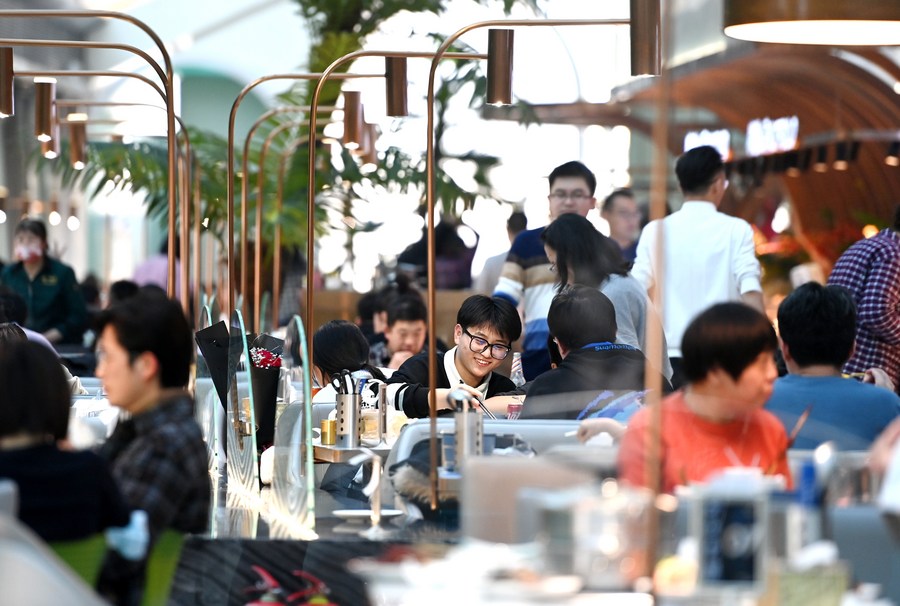Diners enjoy a buffet at a shopping mall in the northern Chinese municipality of Tianjin on December 31, 2022, the first day of the New Year holidays. (Xinhua/Zhao Zishuo)
(XINHUA) – BEIJING, Jan. 9 – As restaurants resume on-site dining and shopping malls reopen after the implementation of streamlined COVID-19 response measures, cities across China are rapidly returning to their normal bustle .
“On New Year’s Eve, consumers started queuing from noon,” says Sha Jingjing, manager of a hot pot restaurant in Beijing’s Chaoyang District. “More than 1,000 people dined here that day, which gave us more confidence in our business,” he adds.
Yang Xiulong, chairman of the board of Beijing Yan Restaurant, a high-end restaurant chain with 30 locations in the Chinese capital, shares this sentiment.
“I thought the recovery of the sector would take some time, but given the current situation I think the process will undoubtedly accelerate,” he says.
In Guijie, a street popular with crawfish aficionados and midnight snackers, many shops have resumed 24-hour business.
Popular travel destinations like the cities of Sanya on the tropical island of Hainan and Zhangjiakou in northern Hebei, where ice and snow sports flourish, have welcomed an influx of tourists during the three-day holiday of the year. homes. Staff at the popular Pullman Resort Xishuangbanna in the southwestern province of Yunnan said the most coveted rooms were fully booked a week before the start of the holidays.
The economic vitality has also been demonstrated by the traffic in shopping malls and shops. A monitoring system developed by Baidu Maps shows that the congestion rate of shopping malls in cities such as Chongqing, Xi’an, Beijing and Shenzhen increased significantly on January 1st.
According to the Consumer Market Big Data Lab (Shanghai), total consumption in real stores reached 12.01 billion yuan (US$1.74 billion) from December 31, 2022 to January 1, 2023.
Businesses in many cities have issued consumer vouchers to attract customers. In late December, the city of Hohhot, capital of the Inner Mongolia Autonomous Region in the north of the country, issued coupons for a total value of 38 million yuan to boost consumption in sectors such as retail, catering, household appliances, automobiles and commerce electronic.
A local shopping complex saw a significant increase in consumer flow over the New Year holidays, receiving more than 30,000 people a day. “We have launched many promotions, and government-issued coupons have also helped boost our sales,” said Yang Haiyan, manager of Wangfujing stores in Hohhot.
Guo Hongtu, an official at the Hohhot Bureau of Commerce, said consumer flows in shopping malls, as well as the city’s supermarkets and restaurants had returned to 70 percent of their normal levels. ■


